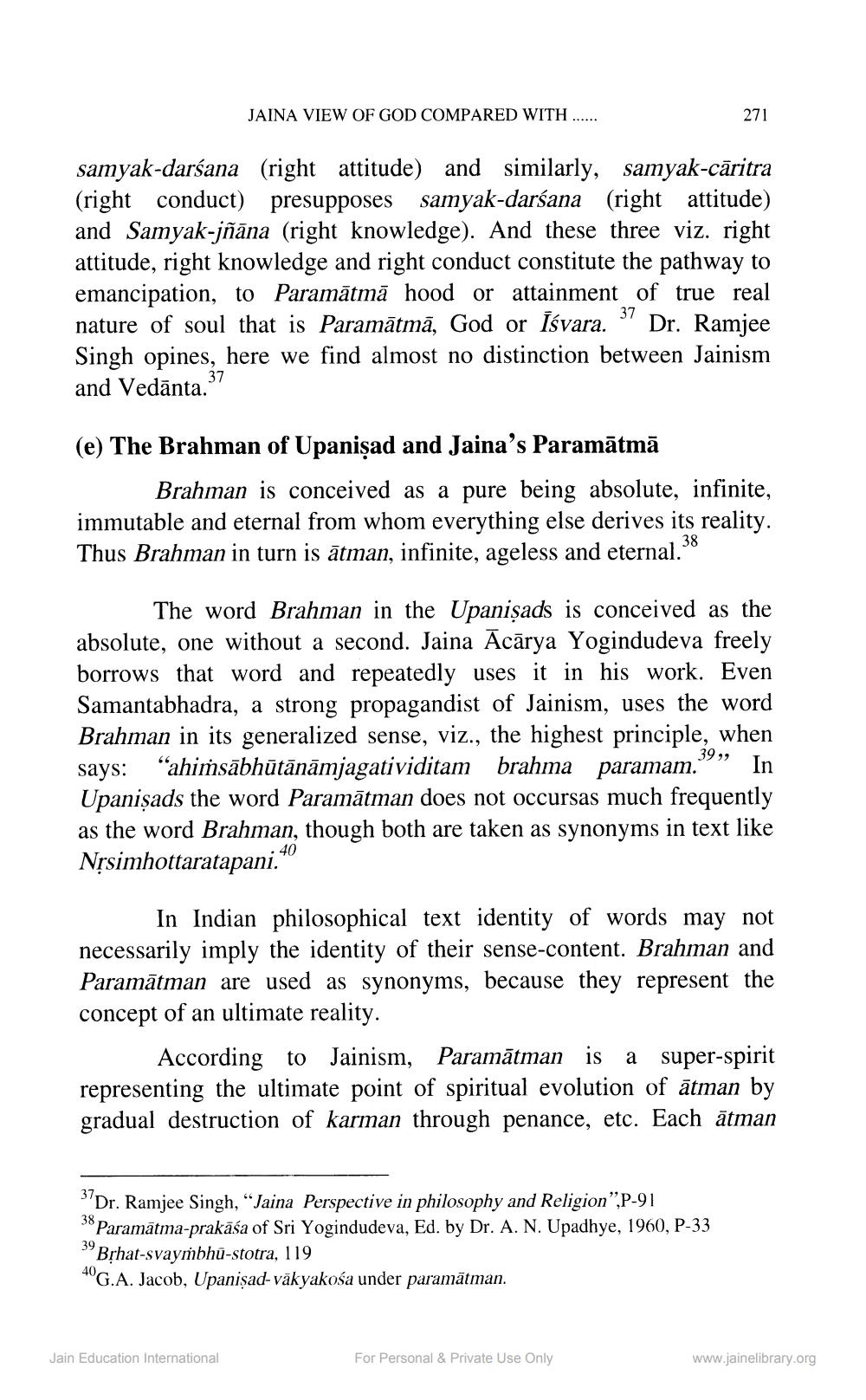________________
JAINA VIEW OF GOD COMPARED WITH ......
271
samyak-darśana (right attitude) and similarly, samyak-cāritra (right conduct) presupposes samyak-darśana (right attitude) and Samyak-jñāna (right knowledge). And these three viz. right attitude, right knowledge and right conduct constitute the pathway to emancipation, to Paramātmā hood or attainment of true real nature of soul that is Paramātmā, God or īśvara.” Dr. Ramjee Singh opines, here we find almost no distinction between Jainism and Vedānta.
(e) The Brahman of Upanişad and Jaina's Paramātmā
Brahman is conceived as a pure being absolute, infinite, immutable and eternal from whom everything else derives its reality. Thus Brahman in turn is ātman, infinite, ageless and eternal.**
The word Brahman in the Upanişads is conceived as the absolute, one without a second. Jaina Ācārya Yogindudeva freely borrows that word and repeatedly uses it in his work. Even Samantabhadra, a strong propagandist of Jainism, uses the word Brahman in its generalized sense, viz., the highest principle, when says: “ahiṁsābhūtānāmjagatividitam brahma paramam." In Upanișads the word Paramātman does not occursas much frequently as the word Brahman, though both are taken as synonyms in text like Nșsimhottaratapani.40
In Indian philosophical text identity of words may not necessarily imply the identity of their sense-content. Brahman and Paramātman are used as synonyms, because they represent the concept of an ultimate reality.
According to Jainism, Paramātman is a super-spirit representing the ultimate point of spiritual evolution of ātman by gradual destruction of karman through penance, etc. Each ātman
* Dr. Ramjee Singh, “Jaina Perspective in philosophy and Religion",P-91 * Paramātma-prakāśa of Sri Yogindudeva, Ed. by Dr. A. N. Upadhye, 1960, P-33
Brhat-svayṁbhū-stotra, 119 40G.A. Jacob, Upanişad-vākyakośa under paramātman.
Jain Education International
For Personal & Private Use Only
www.jainelibrary.org




